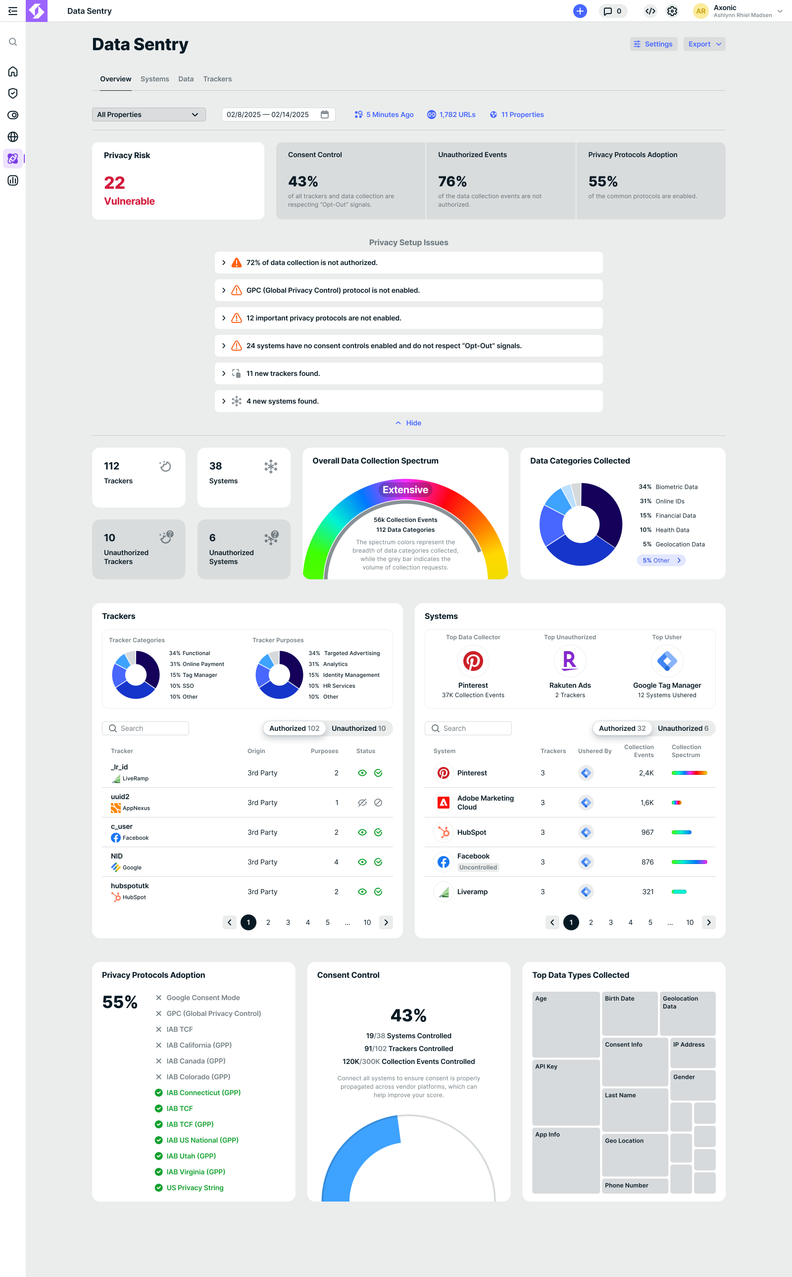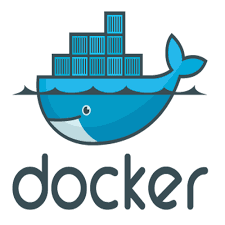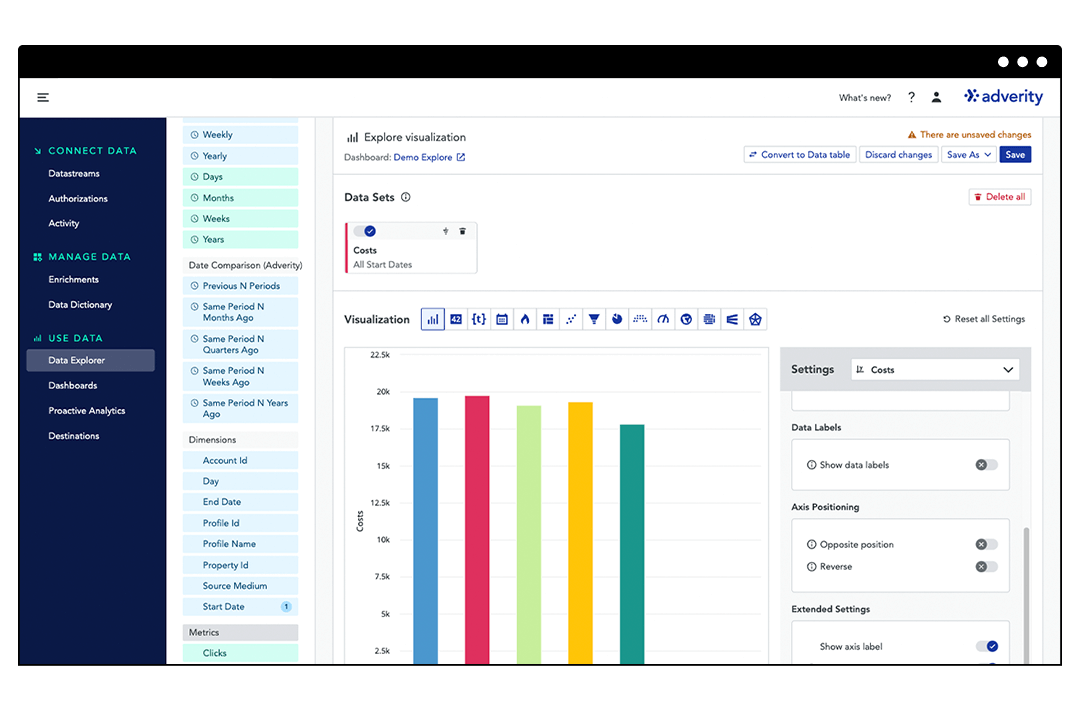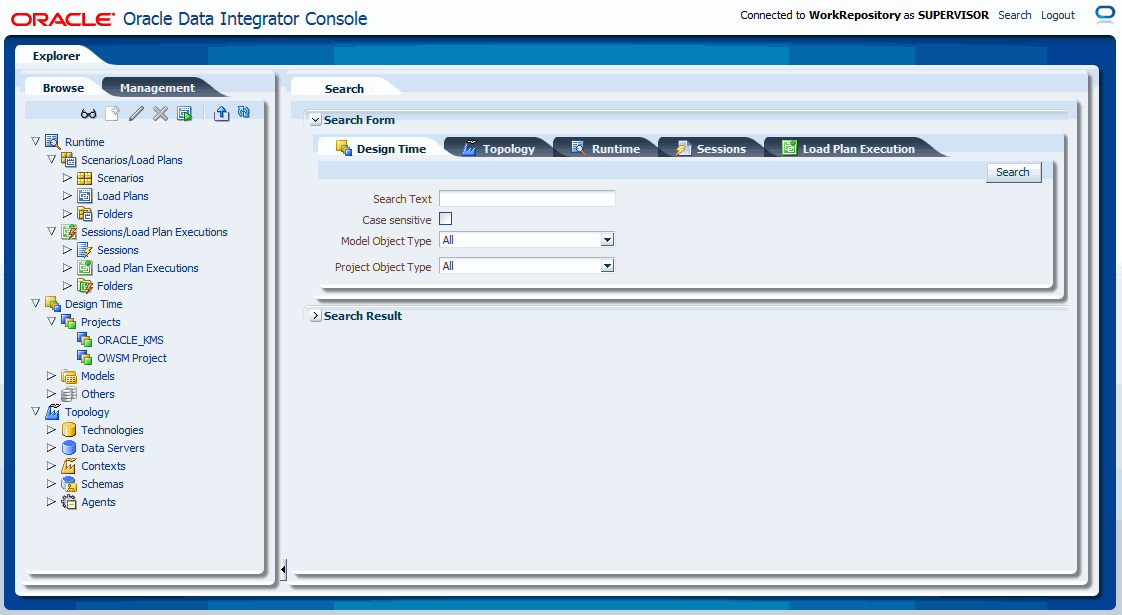Best Data Integration Tools Shortlist
Here’s my shortlist of the best data integration tools:
Our one-on-one guidance will help you find the perfect fit.
Data integration tools help teams connect systems, organize messy data, and automate how information moves between platforms.
Most teams look for a better solution when reports are delayed, formats don’t match, or manual prep starts taking more time than the actual analysis. When tools don’t work well together, it slows everything down and makes it harder to trust the results.
I’ve worked with teams to fix these exact problems, helping them set up integrations that save time and reduce errors without adding more complexity. This guide is based on that work and is here to help you find a tool that fits the way your data actually moves.
Why Trust Our Tool Reviews
We’ve been testing and reviewing data integration tools since 2023. As developers and IT specialists ourselves, we know how critical and difficult it is to make the right decision when selecting software.
We invest in deep research to help our audience make better software purchasing decisions. We’ve tested more than 2,000 tools for different software development use cases and written over 1,000 comprehensive software reviews. Learn how we stay transparent & our hybrid cloud solution review methodology.
Best Data Integration Tools Summary
| Tool | Best For | Trial Info | Price | ||
|---|---|---|---|---|---|
| 1 | Best for marketing analytics | Free demo available | Pricing upon request | Website | |
| 2 | Best for data privacy and compliance | Free trial + free demo available | From $150/month (billed annually) | Website | |
| 3 | Best for supply chain data integration | Free demo available | Pricing upon request | Website | |
| 4 | Best for reliable enterprise data pipelines | Free plan available | From $239/month (billed annually) | Website | |
| 5 | Best for ETL and CDC pipelines | 14-day free trial + free demo available | From $1,999/month | Website | |
| 6 | Best for integration on AWS | Free plan available | Pricing upon request | Website | |
| 7 | Best for orchestrating complex workflows | Free plan available | Free to use | Website | |
| 8 | Best for optimized ETL in Oracle environments | Free demo available | From $0.7742/OCPU/hour | Website | |
| 9 | Best for automated data pipeline creation | Free trial + free demo available | Pricing upon request | Website | |
| 10 | Best for comprehensive API-led connectivity | Free 30-day trial period | Pricing upon request | Website | |
| 11 | Best open-source ETL | Free | Free | Website | |
| 12 | Best for time-sensitive data management | 30-day free trial via Cloud Pak | Pricing upon request | Website |
-

Docker
Visit WebsiteThis is an aggregated rating for this tool including ratings from Crozdesk users and ratings from other sites.4.6 -

Pulumi
Visit WebsiteThis is an aggregated rating for this tool including ratings from Crozdesk users and ratings from other sites.4.8 -

GitHub Actions
Visit Website
Best Data Integration Tools Reviews
Let’s explore my selection of data integration tools by taking a closer look at their features, pricing, strengths, and weaknesses.
Adverity is a centralized platform for connecting, transforming, and analyzing data, with a focus on marketing analytics from platforms like Google Ads.
Why I picked Adverity: I chose Adverity because it offers a comprehensive solution for managing and analyzing data across multiple channels. It simplifies the process of integrating data from different sources. And that helps me gain valuable insights to drive effective marketing campaigns and make informed business decisions.
Adverity Standout Features and Integrations:
Features that impressed me include its versatile pre-built connectors, powerful data transformation capabilities, and intuitive marketing analytics dashboards. It simplifies integration with various data sources, enables effective data management, and provides valuable insights for tracking campaign performance and identifying growth opportunities.
Integrations are pre-built and include consolidating website analytics data from Google Analytics, collecting and analyzing Facebook advertising data, and merging sales and marketing data from Salesforce.
Pros and cons
Pros:
- Extensive integrations with popular data sources and platforms
- Strong focus on marketing analytics
- Centralized platform for easy data connectivity and transformation
Cons:
- Some users may require additional customization options
- Limited advanced analytics features
New Product Updates from Adverity
Adverity Integrates Google BigQuery with New Storage and Data Management Features
Adverity now supports Google BigQuery for its Bring Your Own Storage feature, offering automated data mapping, AI-powered transformations, and data quality monitoring. The "Warehouse per Workspace" option enhances data isolation and access control. For more details, visit Adverity updates.
Ketch is a data privacy management platform designed to help businesses automate compliance with evolving data regulations. By providing tools for consent management, data mapping, and data subject rights fulfillment, Ketch enables organizations to handle personal data responsibly while supporting growth initiatives.
Why I picked Ketch: As a data integration tool, Ketch is unique in that it focuses on data privacy and compliance. One key feature is its automated data mapping which provides real-time visibility into your data landscape, automatically identifying and tracking every system in your organization, from third-party SaaS tools to custom databases. This ensures you have an up-to-date picture of your data ecosystem without manual effort.
Ketch Standout Features and Integrations:
Features include always-on insights that provide continuous monitoring of your data environment, integrated action capabilities that allow you to move from visibility to activation within a single platform, and collaborative design that facilitates cross-stakeholder viewing and insights.
Integrations include Adobe Experience Platform, AdRoll, Google Analytics, HubSpot, Salesforce, Shopify, and Snowflake.
Pros and cons
Pros:
- Customizable workflows allow adaptation to specific business needs
- Automated data discovery
- Provides clear data mapping across systems
Cons:
- Potential learning curve during setup
- May require ongoing adjustments to stay current with evolving regulations
New Product Updates from Ketch

Introducing Data Sentry: Safeguarding Privacy and Compliance
Ketch introduced Data Sentry, a tool that scans network traffic to identify privacy risks, ensuring data collection aligns with consent policies by detecting third-party data transfers and validating opt-out compliance. For more details, visit Ketch Blog.
CLEO Integration Cloud is an end-to-end supply chain integration platform designed to manage B2B complexities by automating API and EDI transactions, back-office integrations, and eCommerce/marketplace integrations.
Why I picked CLEO Integration Cloud: CLEO Integration Cloud offers complete business flow visibility. This feature provides a bird's eye view of business processes, allowing users to correlate invoices with orders, load tenders with responses, and easily search for critical transactions. This level of visibility is invaluable for making informed decisions quickly and efficiently.
CLEO Integration Cloud Standout Features and Integrations:
Features include the ability to automate EDI and API transactions, which helps avoid slow response times, manual data input errors, and integration complexity. Additionally, the real-time business insights feature offers configurable dashboards and alerts, providing users with up-to-date information on every B2B transaction.
Integrations include thousands of pre-built and customizable options, allowing users to be able to quickly and easily connect to a variety of systems including TMW, Trimble, Project44, Microsoft D365, SAP, NetSuite, and many more.
Pros and cons
Pros:
- The platform is scalable
- Good data transformation capabilities
- Real-time monitoring and visibility of data
Cons:
- Could offer more comprehensive reporting
- Learning curve for new users
Hevo is a no-code enterprise data pipeline platform that helps you automate the process of collecting data from over 150 sources, loading it into your data warehouse, and making it analytics-ready.
Why I picked Hevo: I like its real-time data processing capability. Hevo's architecture is designed to deliver data with low latency, ensuring that your analytics are based on the most current information. Another notable feature is Hevo's automated schema management. Hevo automatically detects changes in your source schema and replicates them to your destination, keeping your data warehouse in sync without manual intervention.
Hevo Cloud Standout Features and Integrations:
Features include pre-load transformations that let you clean and format data on the fly, post-load data transformations to prepare your data for analytics as soon as it lands in the warehouse, and a fault-tolerant architecture that ensures data security with no data loss.
Integrations include MongoDB, Google Analytics, Salesforce, HubSpot, Azure Synapse Analytics, BigQuery, Snowflake, Redshift, Mailchimp, Klaviyo, WordPress, Pipedrive, and more.
Pros and cons
Pros:
- Automated error handling
- Wide range of connectors supports various data sources
- Real-time data transfer ensures up-to-date analytics
Cons:
- Editing established pipelines can be challenging
- Pricing may be a concern for small businesses
Integrate.io is a cloud-based platform for real-time ETL and CDC workflows. It offers a low-code visual builder that helps both technical and non-technical users create data pipelines with minimal engineering support.
Why I Picked Integrate.io: I picked Integrate.io for its true low-code interface that allows non-technical users to build complete data integration and mapping pipelines visually. With dedicated solution engineer support, it’s a strong fit for teams without full-time data engineers that still require reliable real-time replication and onboarding assistance.
Integrate.io's Standout Features and Integrations:
Features include real-time database replication with 60-second latency, file-based data transformation workflows, and over 220 drag-and-drop transformations. It also supports both ETL and reverse ETL pipelines. The built-in Python editor adds flexibility for advanced users, while its robust security framework helps meet HIPAA, GDPR, and CCPA requirements. Additionally, the visual pipeline builder allows teams to automate data preparation without writing code.
Integrations include Salesforce, HubSpot, Amazon Redshift, Snowflake, Google BigQuery, NetSuite, API, SFTP, Oracle, Zendesk, and over 150 additional data sources.
Pros and cons
Pros:
- Extensive data transformation options available
- Fixed-fee pricing includes unlimited usage
- Visual interface is easy to use
Cons:
- Some advanced workflows still require technical input
- Pricing may not suit small teams
AWS Glue is a powerful data integration tool that specializes in fully managed cloud-based extract, transform, load (ETL) processes and data integration on the Amazon Web Services (AWS) platform.
Why I picked AWS Glue: I chose AWS Glue because it’s a fully managed, scalable, and reliable solution for cloud-based data integration on AWS. It’s an ETL platform that allows me to easily process and integrate data from various sources within the AWS ecosystem.
AWS Glue Standout Features and Integrations:
Features include its automatic schema discovery from diverse data sources, efficient job orchestration for ETL workflows, and the convenience of a centralized data catalog for metadata management and data lineage tracking.
Integrations are available natively with popular AWS services, including Amazon S3, Amazon Redshift, Amazon RDS, Amazon Athena, Amazon QuickSight, and Amazon SageMaker.
Pros and cons
Pros:
- Enhanced data governance
- Automatic schema discovery
- Fully managed and scalable cloud-based ETL solution
Cons:
- Some users may require additional AWS services for comprehensive data integration needs
- Limited integration options with non-AWS services
Apache Airflow provides a platform for designing, scheduling, and monitoring data workflows, enabling efficient and reliable data integration processes.
Why I picked Apache Airflow: I chose Apache Airflow for its ability to handle intricate workflows and manage task dependencies. It’s a flexible and scalable architecture that offers control and reliability for data integration projects. It's also an open-source tool, making it ideal for companies on a budget that still need a powerful data integration solution.
Apache Airflow Standout Features and Integrations:
Features that impressed me about Apache Airflow include its complex workflows with visual representation and dependency management. It also has an extensible plugin architecture that enables simple customization and integration with various systems and tools. Lastly, Airflow's precise task scheduling, along with comprehensive monitoring and logging, ensures efficient workflow management.
Integrations are available natively with popular databases like MySQL, PostgreSQL, and Oracle. It also integrates with major cloud platforms like AWS and GCP, and it supports integration with messaging systems like Apache Kafka and RabbitMQ.
Pros and cons
Pros:
- Strong community support
- Precise task scheduling and monitoring
- Advanced workflow orchestration
Cons:
- Limited built-in connectors and integrations compared to commercial solutions
- Managing and scaling Airflow deployments can be challenging for large-scale environments.
Oracle Data Integrator (ODI) is a powerful tool that helps businesses integrate and transform data from various sources into Oracle databases. It's ideal for organizations that require robust data integration capabilities and effortless integration with Oracle's ecosystem.
Why I picked Oracle Data Integrator: Oracle Data Integrator (ODI) is a powerful data integration tool that excels in enterprise-grade data integration and optimized ETL processes for Oracle environments. It offers native support and deep integration with Oracle databases, resulting in optimized performance and efficient data-loading processes.
Oracle Data Integrator Standout Features and Integrations:
Features that stand out to me include Oracle Data Integrator’s (ODI) pre-built Knowledge Modules for streamlined data integration tasks and real-time data integration through Change Data Capture (CDC) techniques. Its pre-built integration with a variety of Oracle technologies provides convenience and is also worthy of note.
Integrations are pre-built with Oracle Database, Oracle Data Warehouse, and Oracle Business Intelligence. This enables businesses to extract, transform, and load data for reporting and analytics purposes.
Pros and cons
Pros:
- Real-time data integration via CDC
- Oracle ecosystem integration
- Enterprise-grade data integration
Cons:
- Performance can be slow for complex integrations
- Learning curve for non-Oracle users
Fivetran specializes in automating data pipeline creation and providing smooth data integration. It allows businesses to connect and synchronize their data from various sources.
Why I picked Fivetran: I chose Fivetran because it excels in simplifying the data integration process through its automated pipeline creation. This means I can easily connect, sync, and analyze data from different sources without the need for complex coding or manual data extraction.
Fivetran Standout Features and Integrations:
Features include automated data pipeline creation and in-pipeline data transformation options. It also provides built-in data integration with a range of popular sources, simplifying the connection and synchronization of data from different platforms.
Integrations are pre-built and include over 355 data connectors to platforms like HubSpot, MySQL, Oracle, Salesforce, and AWS CloudTrail.
Pros and cons
Pros:
- Offers data transformation options within the pipeline
- Simple integration with popular data sources
- Automated data pipeline creation simplifies the integration process
Cons:
- Some users may require more extensive data governance and security features
- Limited customization options for complex data transformations
MuleSoft Anypoint Platform is an API-led integration platform that helps organizations connect any system, data, or API to integrate at scale.
Why I picked MuleSoft Anypoint Platform: I chose the MuleSoft Anypoint Platform because of its API-led connectivity, hybrid integration capabilities, and intuitive user interface. It's also great for both technical and non-technical users.
MuleSoft Anypoint Platform Standout Features and Integrations:
Features that users benefit from include its comprehensive capabilities in API management, data integration, and enterprise service bus (ESB). When I tried it out, I appreciated that I could access a wide range of native connectors, supporting over 1,000 different systems and applications.
Integrations are pre-built, which include Salesforce, SAP, Oracle, and Microsoft. It also integrates with popular cloud-based services like Amazon Web Services, Microsoft Azure, and Google Cloud Platform.
Pros and cons
Pros:
- Scalable and secure
- Wide range of features and built-in integrations
- Comprehensive API-led integration platform
Cons:
- Vendor lock-in makes it difficult to switch platforms
- Can be expensive, and pricing is available on request only
Pentaho Data Integration is an open-source ETL tool that helps organizations extract, transform, and load data. It's highly customizable and extensible, making it a versatile tool for data warehousing, migration, and consolidation.
Why I picked Pentaho Data Integration: I chose Pentaho Data Integration for its open-source nature and vibrant community. As an open-source tool, it's flexible and extensible, and its active community provides resources, documentation, and plugins. These aspects make it one of the best data integration tools available.
Pentaho Data Integration Standout Features and Integrations:
Features that I liked about Pentaho Data Integration include its ability to handle complex data integration scenarios. Its community-developed plugins provide it with extensive connectivity. Another reason I chose this tool is that its developer community is highly active in providing insights and resources for the tool.
Integrations are pre-built for databases like MySQL, Oracle, PostgreSQL, and Microsoft SQL Server, along with big data platforms such as Apache Hadoop, Apache Spark, and Amazon EMR. Additionally, it integrates with cloud services like Amazon S3, Microsoft Azure Blob Storage, and Google Cloud Storage.
Pros and cons
Pros:
- Community-developed plugins enable extensive integrations
- Community support and collaboration.
- Flexible and customizable.
Cons:
- Some advanced features require additional coding
- Requires technical expertise for complex workflows
IBM InfoSphere DataStage is a data integration tool for enterprise-grade ETL. It provides a comprehensive solution for integrating, transforming, and loading data from diverse sources into target systems.
Why I picked IBM DataStage: I recommend IBM InfoSphere DataStage as a top data integration tool for its enterprise-grade ETL capabilities and parallel processing. It can handle large-scale data integration projects efficiently and improve performance for complex data integration needs.
IBM DataStage's Standout Features and Integrations:
Features include accelerated data integration, which handles growing data volumes. And I particularly value its built-in transformation functions, ensuring high data quality and accurate outcomes.
Integrations are pre-built and include databases like Oracle, SQL Server, and DB2, along with cloud platforms like IBM Cloud, AWS, and Azure. It also extends to big data platforms like Hadoop and Spark.
Pros and cons
Pros:
- Comprehensive transformation capabilities
- Excellent scalability
- Fast data integration
Cons:
- Pricing isn't suited to small-scale projects
- Setup and configuration are complex
Other Data Integration Tools
In case you haven’t found the perfect data integration solution for your specific needs from the list above, here are some more options that are worth checking out:
- Microsoft Azure Data Factory
For the Microsoft Azure platform
- Dell Boomi
Low-code development environment
- SnapLogic
Visual interface and range of connectors
- Informatica Cloud
For advanced data quality and governance
- Precisely
IoT data integration
- Matillion ETL
For big data integration
- Luigi
Data cleansing capabilities
- SAS Data Integration Studio
For legacy systems
- Jitterbit
Scalability and elasticity
- HVR Software
For integration with CRM and sales platforms
Related Software & Tool Reviews
If you still haven't found what you're looking for here, check out these other types of tools that we've tested and evaluated.
- Network Monitoring Software
- Server Monitoring Software
- SD-Wan Solutions
- Infrastructure Monitoring Tools
- Packet Sniffer
- Application Monitoring Tools
Selection Criteria for Data Integration Tools
When selecting data integration tools, I focus on functionality and how well they meet specific use cases that are critical for transmitting data between sources effectively. This evaluation stems from personal trials and comprehensive research into these tools, ensuring they address software buyer needs, alleviate pain points, and seamlessly facilitate data flow.
Core Data Integration Tool Functionality: 25% of total weighting score
To be considered for inclusion on my list of the best data integration tools, the solution had to support common use cases. These include:
- Data extraction from multiple and diverse sources
- Transformation of data into a consistent format for analysis
- Loading data efficiently into a target destination
- Real-time data integration for timely decision-making
- Ensuring data quality and integrity throughout the integration process
Additional Standout Features: 25% of total weighting score
- Solutions that offer AI and machine learning capabilities for predictive analytics and automated data quality management.
- Tools that provide advanced data governance features for better compliance with global data protection regulations.
- Platforms that include innovative collaboration features for team-based data integration projects.
- Software that integrates with cutting-edge technologies like blockchain for enhanced security and data integrity.
- Examples of unique tools include those offering serverless data integration services to optimize resource use and cost.
Usability: 10% of total weighting score
- Clear and intuitive user interfaces that simplify complex integrations.
- Drag-and-drop functionality for easy pipeline construction.
- Visual data flow design for better understanding and management of integration processes.
Onboarding: 10% of total weighting score
- Availability of comprehensive training materials, such as video tutorials and documentation.
- Interactive product tours and demos that offer hands-on experience right from the start.
- Community forums and dedicated support channels for real-time assistance.
Customer Support: 10% of total weighting score
- 24/7 live chat support for immediate problem resolution.
- Active user communities for peer support and knowledge sharing.
- Regularly updated FAQs and troubleshooting guides.
Value For Money: 10% of total weighting score
- Transparent pricing structures without hidden fees.
- Flexible pricing plans that cater to different sizes and types of businesses.
- Free trials or demo versions that allow for thorough testing before purchase.
Customer Reviews: 10% of total weighting score
- Overall satisfaction ratings and testimonials.
- Reviews that detail specific use cases and how the tool addressed them.
- The frequency and context of any negative feedback, focusing on recurring issues.
In selecting data integration tools, I prioritize those that not only meet the fundamental requirements of data handling but also offer additional features that enhance productivity, user experience, and overall value. This approach ensures that the tools recommended can effectively support businesses in managing their data integration needs efficiently and effectively.
How to Choose Data Integration Tools
It’s easy to get bogged down in long feature lists and complex pricing structures. To help you stay focused as you work through your unique software selection process, here’s a checklist of factors to keep in mind:
| Factor | What to Consider |
|---|---|
| Scalability | Check how easily the tool can handle more data sources or higher volumes of data. Your chosen solution should support growth without performance bottlenecks. |
| Integrations | Confirm compatibility with your existing databases, cloud services, and analytics tools. Easy integration prevents time-consuming manual workarounds. |
| Customizability | Look for options to customize workflows, data mapping, and transformations. Your team should adapt the tool to match your specific business processes. |
| Ease of Use | Choose software that’s intuitive, requiring minimal training. Your team should quickly build and manage integrations without extensive technical knowledge. |
| Budget | Evaluate pricing transparency and flexibility. Select software that offers clear pricing models, avoiding unexpected costs as your needs grow. |
| Security Safeguards | Ensure strong data encryption, secure authentication methods, and compliance certifications. You need assurance your sensitive information stays protected. |
| Support Quality | Opt for providers offering responsive customer support. Prompt assistance reduces downtime and helps your team address integration issues efficiently. |
| Real-Time Capability | Consider tools that support real-time data integration if your business relies on immediate analytics or quick decision-making. Timely insights can directly affect business performance. |
Trends in Data Integration Tools for 2025
Data integration tools are witnessing rapid evolution in 2025, driven by the growing complexity of data ecosystems and the increasing demand for real-time, insightful data analytics. Reviewing product updates, press releases, and release logs from leading tools reveals key trends in how these solutions are adapting to the needs of data professionals. Here's my take on some of the key trends to watch in the data integration space:
- Emphasis on Real-time Data Integration: The shift towards real-time data processing is unmistakable. Tools are increasingly focusing on minimizing latency in data transmission between sources, a reflection of the growing need for immediate insights in decision-making processes.
- Advanced Data Transformation Capabilities: There's a clear trend towards more sophisticated data transformation features. This includes the introduction of AI and machine learning algorithms for predictive modeling and data enrichment, indicating a move towards smarter, more autonomous data handling.
- Automated and Intelligent Data Pipelines: The automation of data pipelines, enhanced by AI for error handling and optimization, is rapidly evolving. This functionality aims to reduce manual intervention and improve efficiency in data workflows.
- Predictive Data Integration: Some tools are introducing predictive capabilities, allowing users to forecast trends and outcomes based on incoming data streams. This novel functionality extends the utility of integration tools beyond mere data processing to strategic planning support.
What Are Data Integration Tools?
Data integration tools are software that help move and combine data from different systems into one place. They're used by data engineers, analysts, and IT teams who need clean, usable data for reports, dashboards, or applications. Features like format conversion, automated syncing, and source mapping help with reducing manual work, fixing mismatches, and making sure data is up to date. These tools make it easier for teams to get the right data without spending time piecing it together by hand.
Features of Data Integration Tools
Here are the most important features to look for in data integration tools:
- Connectivity to Multiple Data Sources: This feature enables the API integration tool to connect with a wide range of data sources. It's essential because it ensures that the tool can pull data from wherever it resides, whether in cloud-based services, on-premises databases, or anywhere in between.
- Data Transformation Capabilities: The ability to transform data is crucial. It allows the tool to convert data into a uniform format, making it compatible across different systems and ensuring consistency in reporting and analysis.
- High Performance and Scalability: High performance ensures that data processes run swiftly, while scalability allows the tool to handle growing amounts of data efficiently. This is vital for maintaining quick data processing times even as data volumes expand.
- Real-time Integration: This enables the continuous flow of data between systems. Real-time integration is important for operations that require up-to-the-minute data, such as dynamic pricing or inventory management.
- Data Quality Management: Ensuring data quality is fundamental. This feature helps identify and correct data errors or inconsistencies before they impact decision-making, maintaining the integrity of the data ecosystem.
- Support for ETL and ELT Processes: Flexibility in supporting both ETL (Extract, Transform, Load) and ELT (Extract, Load, Transform) processes provides versatility in how data is prepared and loaded into target systems. This is key for optimizing performance based on the specific needs of a project or infrastructure.
- User-Friendly Interface: An intuitive interface makes the tool accessible to users of all skill levels. It simplifies the complex process of data integration, enabling more members of an organization to participate in data-driven initiatives.
- Comprehensive Security Measures: Security features protect sensitive data during the integration process. Robust security measures are essential to comply with data protection regulations and safeguard business intelligence.
- Advanced Analytics and Reporting Tools: Integrating analytics and reporting capabilities allow users to derive insights directly from the integration tool. This feature streamlines the process from data integration to decision-making.
- Cloud and On-Premises Deployment Options: Offering both deployment options provides flexibility. Businesses can choose the best fit for their operational needs and security requirements, whether it’s cloud for scalability or on-premises for control.
Benefits of Data Integration Tools
Data integration tools have become indispensable in today’s data-driven world, offering a powerful means to consolidate, manage, and analyze data from diverse sources. Here are five primary benefits of data integration tools for users and organizations:
- Enhanced Decision-Making: By providing a unified view of data, these tools enable better, more informed decisions. Access to consolidated data from multiple sources allows businesses to gain comprehensive insights, leading to more accurate and strategic decision-making.
- Increased Productivity: Automating the data integration process saves time and reduces manual effort. Users can focus on analysis and interpretation rather than on the time-consuming tasks of collecting and preparing data, thereby increasing overall productivity.
- Improved Data Quality and Consistency: These tools enhance the accuracy, reliability, and consistency of data. By automating data transformation and cleansing, data integration tools ensure that businesses use clean, accurate, and consistent data across all applications and analyses.
- Scalability and Flexibility: Data integration tools offer scalable solutions that grow with your business. They adapt to changing data volumes and structures, ensuring that businesses can easily integrate new data sources and scale their data infrastructure as needed.
- Better Compliance and Security: By centralizing data management, these tools help improve compliance with regulatory requirements and enhance data security. They provide features like audit trails, data encryption, and access controls, ensuring that sensitive data is handled securely and in compliance with regulations.
Costs and Pricing of Data Integration Tools
Selecting data integration tools requires an understanding of the various pricing models and plans available. Costs vary based on features, team size, add-ons, and more. The table below summarizes common plans, their average prices, and typical features included in data integration tools solutions:
Plan Comparison Table for Data Integration Tools
| Plan Type | Average Price | Common Features |
|---|---|---|
| Free Plan | $0 | Basic data connectors, limited integrations, community support, and minimal data volume capacity. |
| Personal Plan | $20-$50/month | Expanded data connectors, scheduled data syncing, email support, single-user access, and moderate data capacity. |
| Business Plan | $50-$200/user/month | Real-time integrations, advanced transformation capabilities, team collaboration, priority support, and increased data limits. |
| Enterprise Plan | $200+/user/month | Custom integrations, unlimited data volume, dedicated account manager, enterprise security, SLA guarantees, and premium support. |
Data Integration Tool FAQs
Here are some answers to frequently asked questions about data integration tools:
What are the different types of data integration approaches?
How does data integration impact data governance and compliance?
How do data integration tools handle different data formats and structures?
What level of technical expertise is required to use data integration tools effectively?
What's Next?
Choosing the right data integration tool can be the difference between seamlessly flowing information and a digital traffic jam. With the landscape of business data growing more complex, it's crucial to invest in a solution that aligns with your organization's needs—whether that's scalability, real-time processing, or robust security. Organizations seeking integrated solutions should also consider embedded iPaaS platforms for comprehensive connectivity.
The best tools on the market offer a mix of flexibility, user-friendliness, and powerful features that help you centralize and leverage your data more efficiently. Take the time to evaluate your unique requirements, test out the tools that stand out, and build a data strategy that empowers your business to thrive in this data-driven era.
Subscribe to The CTO Club newsletter for more industry insights from technology professionals.




























